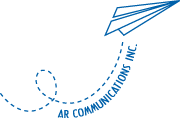The Case for Podcasts – Doubling the odds that your marketing message will be remembered
As many of you know, I have long been a fan of podcasts as an effective marketing tool. My reasoning was, and continues to be, twofold: First, anecdotal evidence demonstrates that a significant portion of your audience prefers to consume content by listening to it as opposed to reading it. Second, many C-level decision-makers no longer read and review product and service options while in the office, where their time is at a premium, but rather while driving or working out. In these latter settings, audio content trumps all other types of content for obvious reasons.
As our rationale was mostly based on anecdotal evidence, I am always on the lookout for science-based empirical evidence to buttress my thinking. I recently came across a study from sparkinsight.com (see graphic below) that proves our podcast thesis – after two weeks, we remember 10% of what we read, 20% of what we hear, and 50% of what we see and hear.
So, you ask, what is the best way to leverage the power of the spoken word?
Here are two suggestions:
1. When promoting a new product or service, consider creating two short (15 minutes) podcasts: one with an internal expert and the second with a satisfied customer or partner. The first positions your company as an expert or thought leader, while the second represents the third-party social proof for that positioning. We call it the “1-2 integrated marketing punch”.
2. If your company lists its management or partners with pictures and bios on its Web site, create a very short (5 minutes) podcast with each of them.
Remember: by simply adding a podcast to your marketing mix, you are doubling the chances that your audience will remember your message.
More Formats: Better Learning (2)
The second concept related to neuroscience is the idea of assisting people to interact with your content in multiple ways. The concept of “multimodal learning” explains that people are more likely to learn and retain information when it is presented in multiple modalities, such as written (visual) and aural (auditory) at the same time. Your content will get more attention if you offer people multiple formats by which they can consume it.


Leave a Reply